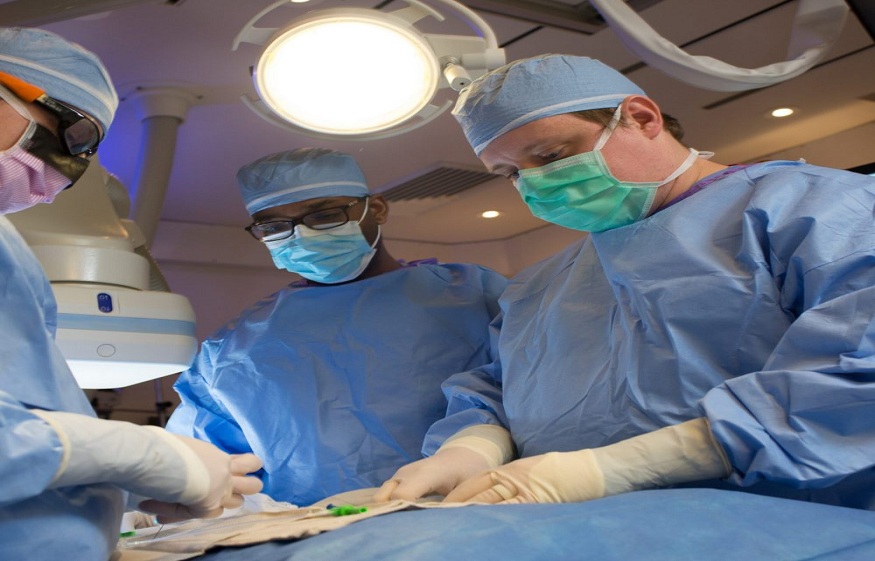In the ever-evolving field of medicine, cardiovascular imaging is transforming how heart conditions are diagnosed and treated. Advanced imaging technologies are providing healthcare providers with unparalleled insights into the heart’s structure and function, enabling precision treatments like never before. These advancements are not only improving patient outcomes but also reshaping how a cardiologist in Las Vegas approaches complex conditions. This article explores groundbreaking techniques in cardiovascular imaging and their impact on patient care.
Advanced Imaging Techniques: A Detailed Look at the Heart
Traditional imaging methods often lacked the resolution and depth necessary to fully understand heart conditions. With the advent of advanced imaging techniques, clinicians can now visualize the heart in exceptional detail. These technologies allow for precise identification of structural abnormalities, significantly improving diagnostic accuracy and enabling tailored treatments for each patient. Beyond diagnosis, these tools are instrumental in surgical planning, ensuring procedures are carried out with greater precision and safety. For instance, advanced imaging techniques are increasingly being used in valve replacement surgeries, providing real-time views of the heart to guide interventions with unmatched accuracy. In addition, modern imaging tools help in monitoring treatment efficacy over time. By comparing detailed images from different points in a patient’s treatment journey, healthcare providers can adjust therapies as needed, ensuring optimal outcomes. This adaptability has been particularly beneficial for patients with congenital heart defects, where long-term monitoring is critical.
Artificial Intelligence in Imaging Analysis
Artificial intelligence (AI) is revolutionizing cardiovascular imaging by automating data analysis and enhancing diagnostic precision. AI algorithms can process imaging results faster and more accurately than ever before, identifying subtle patterns that might be missed by the human eye. For example, AI can detect early signs of conditions such as coronary artery disease or heart failure, enabling intervention at earlier stages. Additionally, AI-powered imaging systems reduce the burden on healthcare professionals by streamlining workflows, allowing more time for patient care. This innovation is a game changer in both efficiency and patient outcomes. AI is also proving invaluable in predictive analytics. By analyzing large datasets from imaging scans and patient histories, AI tools can predict the likelihood of future cardiovascular events, such as heart attacks or strokes. This predictive capability allows for preventive measures, reducing the incidence of life-threatening episodes and improving overall patient management. Moreover, AI is playing a significant role in population health, identifying trends and patterns that can inform public health initiatives.
Minimally Invasive Imaging Methods
Minimally invasive imaging methods are allowing cardiologists to view blood vessels from within. These techniques provide detailed information about plaque buildup and arterial walls, enabling targeted interventions. By reducing the need for more invasive diagnostic procedures, these methods minimize patient risk and recovery time. For instance, minimally invasive techniques are invaluable during stent placement, offering real-time guidance to optimize results and ensure long-term success. In addition to enhancing procedures, these imaging techniques are also improving patient comfort and safety. Traditional methods often required longer recovery periods and posed higher risks. With minimally invasive approaches, patients can often return to their normal activities more quickly, reducing the overall burden of treatment. Furthermore, the detailed insights provided by clinical cardiology in Las Vegas are contributing to better long-term management of chronic cardiovascular conditions, ensuring that patients receive care that is both effective and minimally disruptive.
Molecular Imaging for Early Detection
Molecular imaging represents a significant breakthrough by enabling the visualization of cellular and molecular processes in the heart. Techniques that focus on molecular-level insights can detect early signs of cardiovascular disease before structural changes occur. This proactive approach allows for earlier interventions, improving the prognosis for patients and potentially reducing long-term healthcare costs. Moreover, molecular imaging is playing a critical role in research, helping scientists better understand the mechanisms behind various cardiovascular conditions and paving the way for clinical cardiology in Las Vegas. One of the most promising applications of molecular imaging is in personalized medicine. By identifying specific biomarkers associated with different heart conditions, molecular imaging allows for treatments tailored to the individual’s unique biology. This precision reduces the likelihood of adverse reactions and increases the effectiveness of interventions. Additionally, these techniques are being used to monitor the progress of experimental therapies in clinical trials, accelerating the development of new and more effective treatments.
The evolution of cardiovascular imaging techniques is redefining the possibilities in heart disease diagnosis and treatment. From detailed imaging methods and AI-powered analysis to minimally invasive and molecular imaging, these advancements are equipping healthcare professionals with the tools needed to provide precision care. Each technique brings its own unique benefits, contributing to a comprehensive approach to cardiovascular health. As technology continues to advance, patients can look forward to earlier diagnoses, safer procedures, and improved outcomes for heart health. These innovations not only enhance individual care but also hold the potential to transform the broader field of cardiovascular medicine, ensuring healthier futures for millions worldwide. The ongoing integration of these cutting-edge tools into a cardiologist Las Vegas practice underscores the critical role of technology in shaping the future of healthcare.



